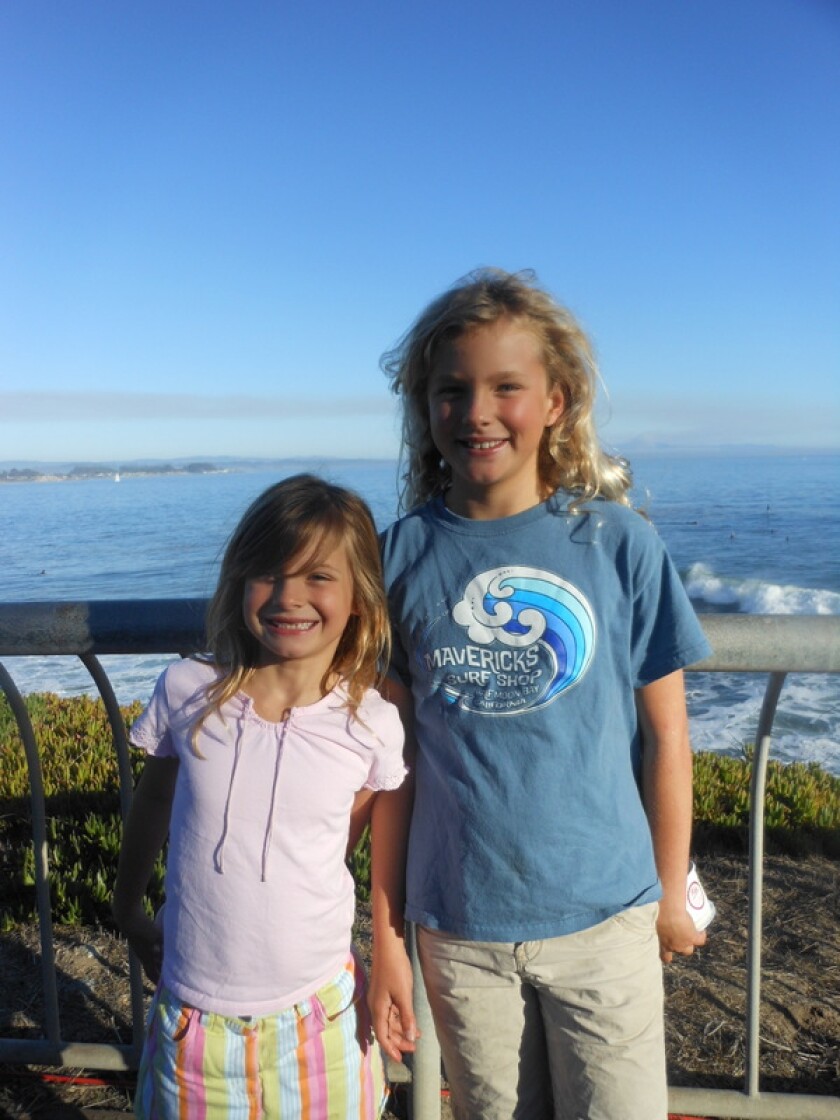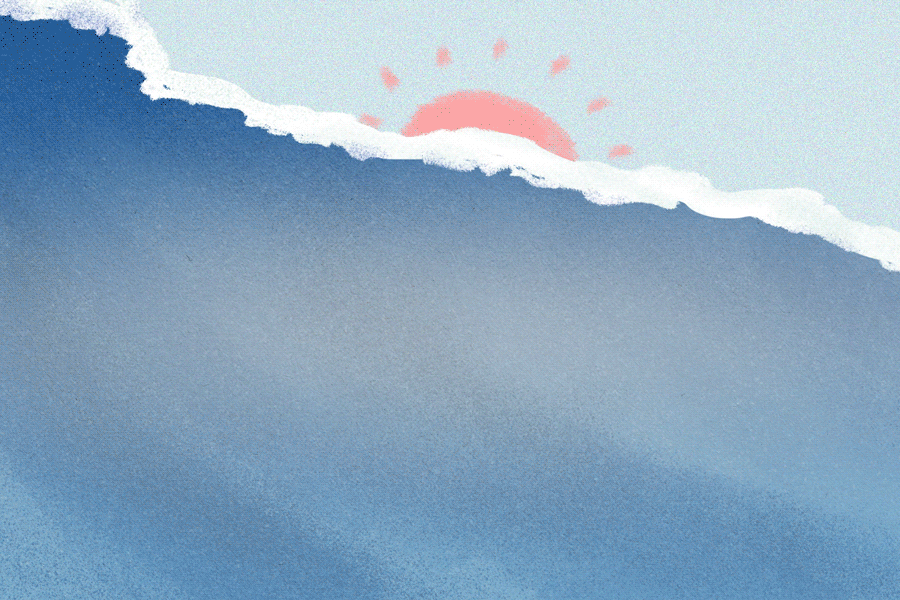Good morning, fellow Escapists. Six hours up the coast from Los Angeles churns the premier big wave surf break in the continental United States. Once a secret held by just a few locals, Mavericks is serious stuff: From October through March, waves can break at 10 feet, 15 feet and even higher.
Over the years, it has claimed the lives of surfing legends such as Mark Foo and Sion Milosky. “It will just add to the lore and legend of this spot,” a local surf shop owner said of Foo’s tragic death while speaking to The Times in 1994. Today, Mavericks is known around the world as a destination for experienced big wave surfers and those interested in watching the beauty and brutality of the ocean from afar.
But in nearby Half Moon Bay, it’s an entirely different story.
The coastal town in San Mateo County is home to beaches that are ideal for beginners — and plenty of surf instructors happy to teach newcomers the ropes, just a few miles from the fearsome waves of Mavericks.
Ella Catalano-Dockins, 20, is one of those instructors. A surfer since age 10, she owns and operates Blue Swell Surf School with her younger sister and mother. The school offers lessons for surfers of all skill levels, as well as surf camps and walking tours of the coastline, where guests can easily spot marine wildlife.

Ella, right, and Lily Catalano-Dockins, shown here as children, are now co-owners of Blue Swell Surf School in Half Moon Bay.
(Courtesy of Ella Catalano-Dockins)
That Blue Swell Surf School is women-owned and -operated is no small feat, considering Titans of Mavericks, the famous big wave contest near Half Moon Bay, was ordered to include a heat for women less than a decade ago.
But in the breaks around Half Moon Bay, there’s a palpable sense of community and fun, no matter who you are, Catalano-Dockins said.
“Growing up with all the same guys that now own the various surf companies in town, or those that I surf with, we don’t want to go pro — we just want people to enjoy the sport and respect the ocean like we do,” she said. “It creates this weird family. The more people that are out in the waves, the more friends we have.”
I recently caught up with Catalano-Dockins to talk about the magic of Half Moon Bay, tips for avoiding the summer crowds and advice for anyone who needs a pep talk before signing up for their first surf lesson.

(Li Anne Liew / Los Angeles Times)
How she got into surfing: I started surfing at age 10 because I broke my arm and couldn’t play softball anymore. I was bouncing off the walls, and my parents were over it. They said I had to find a new sport.
I started surfing with my uncle every Saturday, and I just fell in love. That’s been my life since I was 10 or 11 years old — my mom would just drop me off at the beach, and I would surf.
When I turned 15, I got a job at a surf company teaching lessons, and I was like, “Oh, this is fun. This is what I want to do.”

Ella Catalano-Dockins surfing in the waters off Half Moon Bay
(Ion Banner)
Why Half Moon Bay is a good place to learn surfing: The beaches — especially if you’re going to learn at Surfers Beach — are very forgiving.
There’s always somebody cheering you on. You’ll have people walking down the beach, saying to you, “That was a great wave, you’re a really good surfer.” It encourages you to keep going.
I took a couple of people out on Saturday, and there were two little girls hanging out on the beach in their wetsuits with their dad. On our way out of the water, the little girls told one of the women, “You did great! You were really good!” It just brought a smile to the woman’s face.
What makes Half Moon Bay stand out from other beach towns: It’s a bit bigger than it was when I was little, but Half Moon still totally has that small town, “everybody-knows-each-other” kind of feel.
The best place to grab food after surfing: The Press is one of the best lunch spots I’ve been to around here. Spangler’s Market has a great deli section; they make some fantastic sandwiches that are really great to take the beach or eat after a lesson when you’re really tired and will devour anything.
If you’re looking for a higher-end kind of restaurant, I’d say go to Mezza Luna — right across the street is a really good bar called Old Princeton Landing.
Best view in town: I’m biased because I grew up near Montara State Beach, but if you go at sunset or in the morning, it looks like it’s straight out of a storybook.
The lookout over the ocean up near Mavericks Beach is also really cool. At Surfers Beach, you can look over at the Air Force base, and you can see what we call “The Golf Ball.” When the sun goes behind it, it’s really pretty.
Best way to live like a local: Try to hang out in Half Moon Bay during the weekdays; on the weekends it is very busy. During the weekend, my family hunkers down.
What locals wish tourists knew: Pick up your trash. On Monday mornings, I’ll go down to surf and there will be copious amounts of trash, ranging from giant piles of styrofoam to 100 little wrappers. It’s not just tourists. Locals do it too, and it’s a really big problem.
When I was little, I was taught that you should pick up five pieces of trash off the beach when you leave. Now, I teach this to my students.
Advice for anyone nervous about trying surfing: I don’t lie to people: You’re probably going to fall. But you know, it’s a learning curve; every time you go to stand up, there’s something new to be learned.
My goal is that you enjoy ourselves, you have fun, and you learn something. Even if you don’t stand up or can’t really get yourself on the board, the time in the water is amazing.

Surfers Beach in Half Moon Bay, Calif.
(Kevin Henney / Visit Half Moon Bay)
Our picks for a trip to Half Moon Bay
Rest up after surfing at Half Moon Bay Inn
“Half Moon Bay Inn’s lobby has an eclectic flair,” wrote Times contributor Michele Bigley in 2015. “In the heart of the main drag, the Half Moon Bay Inn offers a dash of panache with unpretentious, pet-friendly rooms.”
During the summer, weekday rates start around $185 per night. Too wiped out after a day of surfing to venture into town? There’s a California-Italian restaurant on site.
Bask in nature
Catching waves is only one way to experience the San Mateo coastline. Here are a few of Times Business reporter Hugo Martín’s recommended activities near Half Moon Bay:

(Li Anne Liew / Los Angeles Times)
Curious about how Mavericks’ waves work?
Don’t miss Times graphics and data journalist Paul Duginski’s explainer on the science behind the swells.
“Swells are generated by winds from big storms, sometimes many thousands of miles away,” he writes. “The waves produced are dependent upon three main factors: the strength of the storm, its duration, and the size of its wind fetch.”
(In case you’re wondering, “fetch” is “the length of open water over which the wind blows.”)
Surfers hope for waves with longer wavelengths, which travel faster, break cleanly and have more space between the crests.
“These longer-interval waves are also the ones with the most energy extending deepest beneath the water level, generating the unique Mavericks break,” Duginski writes. “When these waves ‘feel’ the ocean bottom as they approach shore, that contact causes the part of the wave close to the ocean floor to slow down, and the top of the wave to accelerate, peak and eventually break.”
One last thing
Whenever you’re interacting with the ocean — surfing or otherwise — it’s crucial to be aware and listen to official warnings.
This January, after a volcanic eruption near Tonga triggered powerful waves along the West Coast, authorities ordered people to avoid the water and beaches.
Some surfers and other beachgoers ignored the warnings and ended up requiring emergency rescues from fire department swimmers, my colleague Connor Sheets reported. In Half Moon Bay, two people were swept off a jetty and into the water at Pillar Point Harbor after ignoring evacuation orders.
So, have fun out there everyone, but make sure to take precautions and be safe.
???? Road song
“Waves” remix by Miguel, featuring Kacey Musgraves. Play it to get hyped on your way to your first surf lesson.
Stay connected with us on social media platform for instant update click here to join our Twitter, & Facebook
We are now on Telegram. Click here to join our channel (@TechiUpdate) and stay updated with the latest Technology headlines.
For all the latest Travel News Click Here
